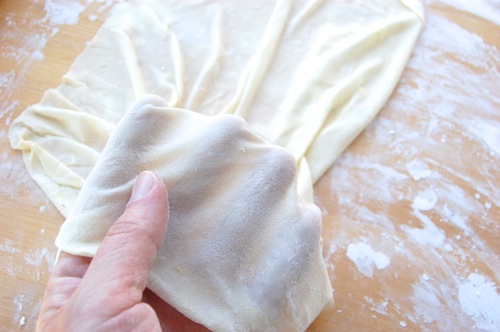
It’s funny how unusual questions tend to come in two’s and three’s. When that happens it makes me wonder if there’s a pastry class out there somewhere conducting an essay exam. Anyway, the question goes like this: when did the Greeks first start using filo dough?
It’s hard to say precisely. As far as I know the ancient Greeks didn’t have thin, filo-like doughs. Their hostile eastern neighbors the Persians, however, did. Ultra-thin doughs have a long history in the Middle East, dating back perhaps to the ancient Egyptians. The Persians invaded Greece in 492 B.C. and then again in 480 B.C., but didn’t stay more than a year in either case. No time for dessert-making classes, in other words.
READ ON

